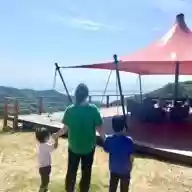Children’s songs, folk songs, and nursery rhymes about insects
We’ve put together a collection of children’s songs about insects.
Don’t worry—by insects we don’t mean the kind everyone dislikes, like cockroaches, but rather the beloved ones such as butterflies, ladybugs, honeybees, and red dragonflies.
The selection includes a variety of songs: newer children’s tunes, folk songs, traditional nursery rhymes, and classic playground songs.
Many boys in particular seem to love insects, so teaching them these songs might make them happy.
Cute insect songs are also popular with toddlers, so they’re definitely worth learning.
- [Children’s Songs of Autumn] Autumn songs, school songs, and traditional children’s rhymes. A collection of classic pieces to sing in autumn.
- [Childcare] Recommended songs and nursery rhymes for November: Fun autumn fingerplay songs
- Nursery rhymes and fingerplay songs to enjoy in May! Songs perfect for the fresh green season
- A collection of classic nursery rhymes and hand-play songs for September! Enjoy autumn with your child through songs.
- Children’s songs and nursery rhymes about the moon
- [Sea Nursery Rhymes] Fun children's songs themed around the sea
- Snake Song: Children's song, nursery rhyme, and hand-play song
- [Children’s Songs for June] Fun finger-play songs and traditional nursery rhymes perfect for the rainy season
- Children’s songs, folk songs, and nursery rhymes for March: fun spring hand-play songs.
- Song of the Maple Leaves. An autumn children’s song/nursery rhyme/folk song
- Nursery rhymes I want to sing in July: fun summer songs
- Children’s Songs You Can Sing in August: Summer-Friendly Kids’ Songs and Fingerplay Rhymes
- Nursery rhymes, folk songs, and children's songs about animals
Children’s songs, folk songs, and nursery rhymes about insects (21–30)
The Mail Carrier, Mr. Cabbage White Butterfly

The lyrics are by writer Hachirō Satō, who also worked on songs such as “Chiisai Aki Mitsuketa” (I Found a Little Autumn), “Kawaii Kakurenbo” (Cute Hide-and-Seek), and “Ureshii Hinamatsuri” (Happy Doll Festival).
The music is by Yoshinao Nakata, who composed countless children’s songs, including “Medaka no Gakkō” (The Killifish’s School) and “Natsu no Omoide” (Summer Memories).
It depicts a cabbage white butterfly flitting back and forth among the flowers.
The Insect Band

This is a school song with lyrics by Harukaze Kuwata and music by Tokuzō Tamura.
Like “The Voices of Insects,” it appears to have been created with an educational purpose: to help children learn the names of insects and their calls.
The children’s song singer Ayako Nōjo is the daughter of Benjirō Nōjo, who, along with Tokuzō Tamura and others, edited collections such as “Songs for Young Children” and “Elementary School Songs.”
Children’s songs, folk songs, and nursery rhymes about insects (31–40)
The caterpillar came out.

It’s a traditional fingerplay song of unknown authorship.
Each of the five fingers represents a green caterpillar in the family—the father, mother, older brother, older sister, and baby—and in the end they turn into butterflies.
Since it’s relatively difficult to extend only the ring finger, this activity tends to be more suitable for older children compared to similar games.
No deals for 88.

It’s a children’s song.
The lyrics mean something like, “Mr.
Bee, I’m still just a child, so please don’t sting me.” When the song ends, the child playing the bee pretends to sting another child with a finger, and the one who gets stung becomes the next bee.
It’s often played in a circle, similar to ‘Kagome Kagome.
’
March of the Honeybees

It’s a piece with an unknown composer to which Yasuyuki Ouchi, a children’s song lyricist and children’s literature author, wrote the words.
It is well known as a beginner practice piece for piano and Electone.
The same melody is also sung with different lyrics under the title “Puppy March.”
Fluttering butterfly

It is one of the many children’s songs that use “butterflies” as their theme.
Because the titles are similar—such as “Fluttering Little Butterfly,” “Rapeseed Flower Butterfly,” “Little Butterfly,” and “The Magic Butterfly”—please take care when searching.
Kurumi Kobato was a children’s song singer who enjoyed immense popularity in the 1950s and 1960s, and she was also a child actress.
We Siblings, Ladybugs

It was the theme song of the TV anime “The Song of the Ladybug,” which aired from 1974.
Since the protagonist is one of seven siblings, the title is inspired by the seven-spotted ladybug, and this motif is shared by the insert songs “Nanahoshi Tentou Hoshi Nanatsu” and “Ladybug March.” All of these songs are sung by Mitsuko Horie, who is known as one of the Four Queens of Anison.
In conclusion
We introduced a variety of songs about insects.
They were all fun songs that made good use of insect chirps, buzzing, and names.
Some may have been familiar, while others you might have heard for the first time.
If you have a child who loves insects, be sure to listen together as a family.





